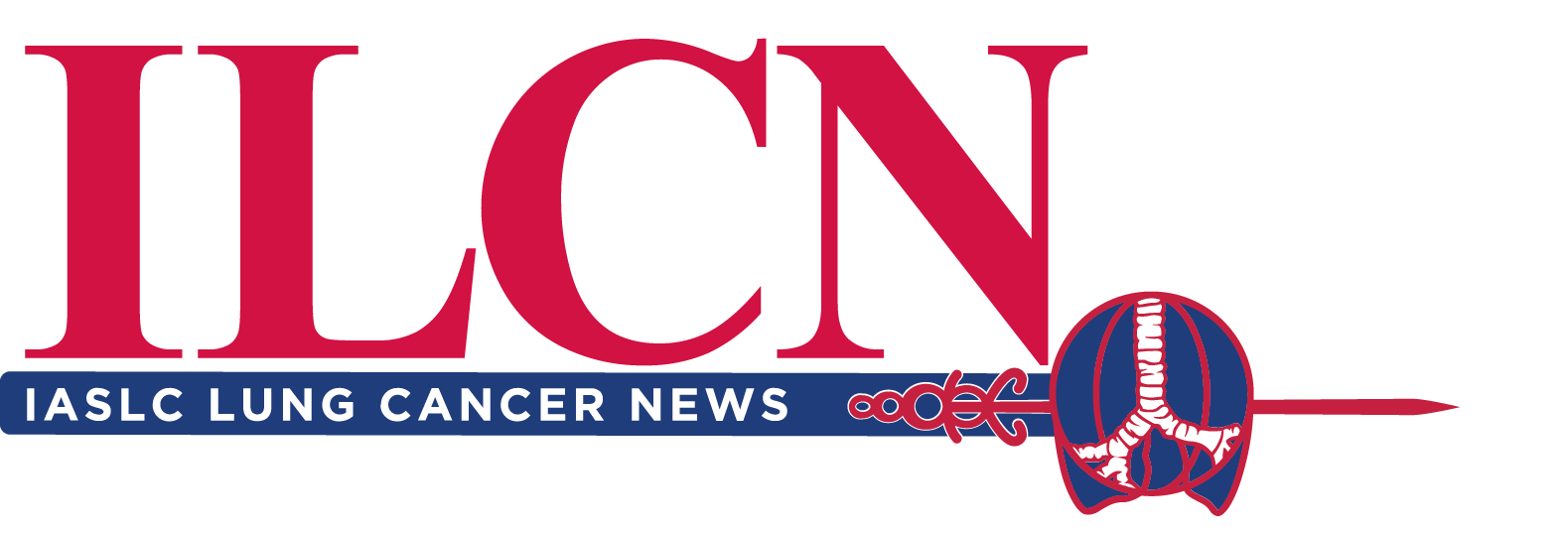For patients with EGFR-mutated non-small cell lung cancer (NSCLC), osimertinib monotherapy has generally been regarded as the standard first-line treatment. According to Helena Yu, MD, it should continue to be.

During a debate at the 2025 Targeted Therapies in Lung Cancer Meeting, Dr. Yu made the case for keeping osimertinib monotherapy as the standard of care for NSCLC with EGFR mutations. She highlighted several factors oncologists consider when determining first-line treatment options.
The debate and other meeting coverage will be available on demand for registered attendees via the IASLC Lung Cancer 360.
“We need to consider side effects, time and effort, financial cost, and quality of life for our patients,” Dr. Yu said. “And, of course, efficacy when looking at progression-free survival (PFS), overall survival (OS), CNS outcomes, and how we can sequence treatments.”
Dr. Yu noted that while combining therapies has shown improvements in PFS among patients, the answer regarding OS is not as clear due to the lack of crossover data in trials, such as MARIPOSA and MARIPOSA-2.
“So, how can we best sequence when we balance efficacy and toxicity?” Dr. Yu said.
Dr. Yu also highlighted the importance of considering costs, not only in financial terms but also with respect to quality of life. Combination therapies, particularly with bispecific monoclonal antibodies, are associated with higher rates of toxicities. These include acneiform rash, swelling, and venous thromboembolism, which can have a significant impact on a patient’s day-to-day life.
“Even grade 1 toxicities can make it difficult to hold a job and enjoy activities. These increased side effects come with more doctors’ appointments, additional medications, and additional financial costs,” said Dr. Yu.
Dr. Yu also emphasized that even when presented with the option of combination therapy, many patients still opt for monotherapy, according to findings from a survey conducted by the Chinese Thoracic Oncology Group. Around three-quarters of physicians (n=584), patients (n=170), and family members (n=193) surveyed indicated a preference for monotherapy over combination therapy, even if combination therapy was found to delay recurrence or tumor progression by 9 months.
“So, is the juice really worth the squeeze?” she asked.
Dr. Yu concluded by noting the importance of utilizing risk stratification to determine the right timing for escalating treatment. She also mentioned that combination therapies should be reserved for high-risk patients exhibiting unfavorable characteristics such as brain metastases, liver metastases, TP53 co-mutations, and detectable ctDNA.
“When balancing toxicity benefits and outcomes, osimertinib monotherapy should be the default standard for most. When patients are high risk and predicted to do poorly with monotherapy, treatment should be escalated—but this is the minority,” said Dr. Yu. “An opt-in strategy will help us decide who needs more aggressive treatment, but for low-risk patients, we need to optimize quality of life and sequence therapies.”

Shirish Gadgeel, MD, FASCO, argued that combination therapies should become the new frontline standard for EGFR-mutated NSCLC. He pointed to limitations of single-agent osimertinib and the potential for tumor resistance, emphasizing the need for combination therapies.
“Osimertinib does not target all cancer cells, and there remain cells that can form the basis for resistance in the future.” He cited data that Dr Yu, herself, published regarding how osimertinib can induce resistance through the enzyme APOBEC3B,
Dr. Gadgeel raised concerns about sequential therapy, noting that 25% to 40% of patients do not receive second-line treatment. He suggested that this may contribute to the consistent survival outcomes for osimertinib that average just more than 3 years.
“I would contend that, in 2025, a median survival of 3 years with frontline therapy in patients with EGFR mutation-positive lung cancer is inadequate,” said Dr. Gadgeel.
Dr. Gadgeel acknowledged that, while he agreed with risk stratification for combination treatment, many patients already exhibit the high-risk features identified by Dr. Yu in her presentation.
“In the MARIPOSA trial, nearly 90% of these patients had one or more of these adverse prognostic features,” said Dr. Gadgeel. “In each of these categories, combination therapy provided better PFS compared to osimertinib.”
In MARIPOSA, participants with a CNS metastasis had a median PFS of 18.3 months with the combination therapy, compared to 13 months with osimertinib monotherapy. Additionally, Dr. Gadgeel pointed out that therapy intensification improved outcomes for patients with detectable ctDNA.
“The benefit with combination treatment was superior in whether the patient achieved an undetectable status or not,” said Dr. Gadgeel. “I think it would be challenging to limit combination treatment only to patients who develop undetectable status after single-agent TKI.”
Dr. Gadgeel concluded by noting that combination treatment strategies, either concurrent or sequential, have already become the standard in other EGFR-mutated settings, such as in:
- Resectable stage II to III disease: Based on the ADAURA trial, surgery, followed by chemotherapy and osimertinib.
- Unresectable stage III disease: Based on the LAURA trial, concurrent chemotherapy and radiation followed by osimertinib.
- EGFR Resistance: Based on MARIPOSA-2, combination chemotherapy and amivantamab.
- Stage IV, treatment-naive exon 20 EGFR mutations: Based on the PAPILLON trial, concurrent chemotherapy and amivantamab.
“So, why should we limit first-line treatment of stage IV NSCLC with classical EGFR mutations to a single-agent EGFR TKI?” Dr. Gadgeel asked.
While there is increasing evidence that supports the effectiveness of combination therapies for PFS, there are still concerns about toxicities and the quality of life for patients. Ultimately, ongoing research and discussions between patients and healthcare providers will remain central in determining who benefits the most from specific treatments.





